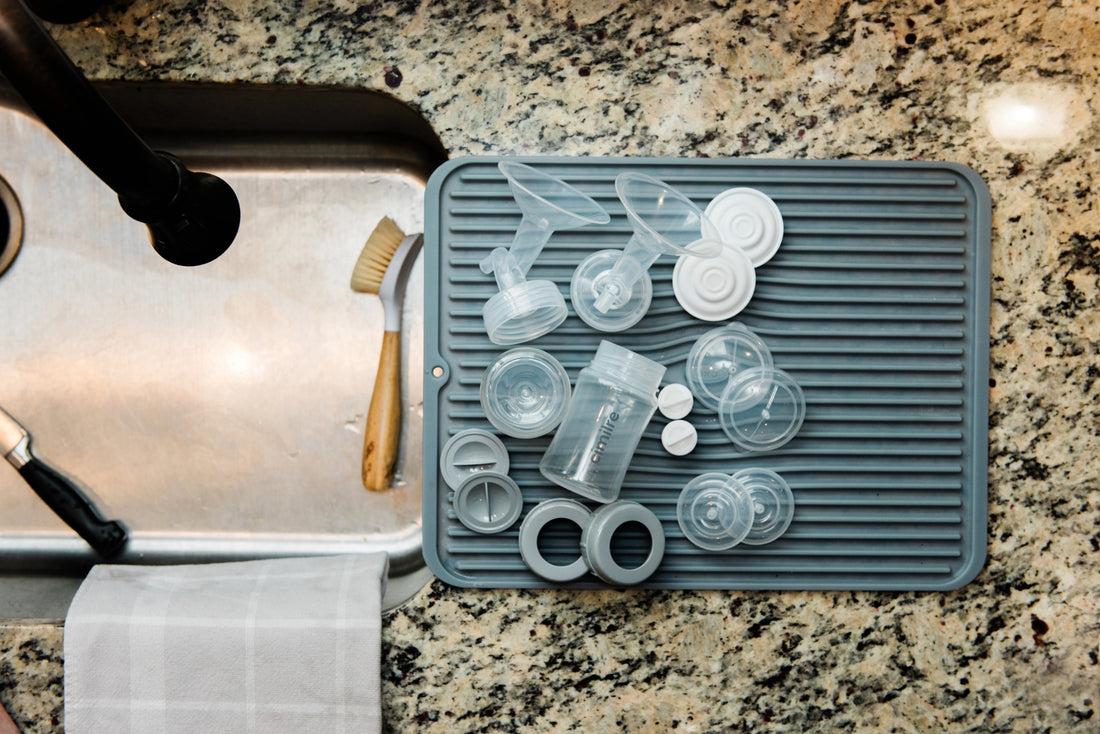
Valves – The #1 Suction Issue & How We Help You Get Them (Free!)
Share
Have you ever sat down for a pump session, only to notice your pump suddenly doesn’t seem to have suction? It can cause a bit of a panic in the moment. Here’s the thing. Odds are the culprit is actually the valves. Breast pump valves, sometimes called duckbill valves, are the smallest part that makes all the difference. These small silicone parts flex with every cycle, creating the vacuum (the suction you feel) that draws out milk. Over time, daily use, repeated washing, and normal wear cause them to stretch or tear. Even the tiniest change in shape can mean weaker suction, longer sessions, and, even worse, less milk output.
💡 Did you know
Breast pump valves need to be replaced regularly to maintain proper function and suction of the breast pump.
The #1 Cause of Suction Issues
Overused, slightly tired valves are something we encounter a lot. Lactation consultants agree: worn valves are the most common reason parents think their pump “isn’t working anymore.” Thankfully, you don’t have to wait until the valve completely fails and impacts suction before replacing it. There are signs you can look for before it becomes an issue.
Signs it's time to replace your valves:
- Slower milk flow or longer sessions
- Noticeable drop in suction strength
- Visible warping, discoloration, or tiny tears
- It's been longer than 1 month since you last replaced

You may be wondering, “How often should I replace breast pump valves?” Cimilre recommends checking them frequently and replacing them every month if you are pumping at work or exclusively pumping. It’s also important to change them at the very first hint of a problem. New valves keep your pump performing like it did right out of the box and, most importantly, it protects your supply during pump sessions.
Recommended replacement guidelines for all breast pump parts (including valves):
- Valves should be replaced every 1 to 3 months.
- Backflow protector should be replaced every 3 to 6 months.
- Flanges should be replaced every 3 to 6 months or as needed.
- Bottles should be replaced every 6 months or as needed with signs of wear
and tear. - Tubing should be replaced as needed.

Good News: Insurance Coverage For Breast Pump Valves!
For the longest time, families had to pay out of pocket for replacement valves, adding just one more ongoing cost to already expensive household bills. Even though many breast pump replacement parts are covered by insurance, breast pump valves had traditionally not been covered. Cimilre believed that was a disservice to feeding families. So, we decided to take action. In efforts to ensure everyone has access to the breast pump supplies they need, we filed an application with the Centers for Medicare & Medicaid Services (CMS) to create a billing code for breast pump valves. This would ensure that breast pump valves could be a covered insurance item so families wouldn’t have to pay out of pocket for this much needed part that requires consistent replacement.
Cimilre didn’t stop there:
- Public Testimony: Company representatives shared data and real stories showing how critical valves are to effective pumping.
- National Campaign: Parents, lactation professionals, and partners submitted written testimony urging CMS to recognize breast pump valves as an essential, covered item.
Our efforts paid off! Effective October 1, 2025 CMS established a billing code specifically for breast pump valves.
This new code means insurance plans can reimburse for valves, treating them like other necessary and covered pumping supplies. While each insurer will set its own timeline and fee schedule to implement this new coverage, the code is a huge first step toward routine coverage and providing access for families across the United States who use a breast pump during their breastfeeding journey.

What Coverage Means For You:
- Check Your Plan: Call your insurance provider and ask about coverage for HCPCS code A4288.
- Keep Spare Parts on Hand: Even with coverage, it’s smart to have extra valves ready so you’re never stuck without them mid-pump session or workday.
- Stay Ahead of Issues: Regularly inspect valves for wear and tear. Replace them proactively; your future self (and your milk supply) will thank you.
Cimilre’s Commitment and Advocacy For Breastfeeding Families
From innovative and award-winning breast pumps, to helping you Get the Right (breast shield and flange) Fit, to policy advocacy, Cimilre continues to support breastfeeding families beyond the pump itself. Getting replacement valves recognized for insurance reimbursement so they can be replaced through insurance is just one more way we’re working to make sure your breastfeeding journey is supported and more accessible. Because when supportive policies are in place, it’s a win for everyone – moms, babies, families, the economy, and public health at large.
Bottom line: Valves wear out fast but replacing them doesn’t have to cost you. With insurance coverage now in place, you can keep spares on hand and protect your milk supply - without added expense. Cimilre is proud to support you every step of the way!
